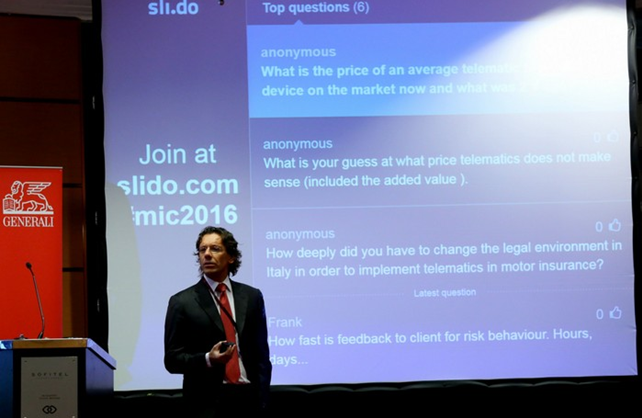
What are the main trends impacting the insurance industry in 2017?
I consider connected insurance the most relevant insurtech trend: it is the more mature as of today and with the larger TAM. Connected insurance solutions are all the insurance approaches based on sensors for collecting data on the state of an insured risk and telematics for the remote transmission and the management of the data collected.
Connected Insurance is an insurtech trend able to generate for the insurance sector:
- Concrete benefits on the bottom line;
- More frequent interaction with customers,
- New knowledge about the customer and his risk;
- Positive externalities to the society.
A paper about those impacts can be downloaded at the following link: http://bit.ly/ConnectedAndSustainableInsurance
Within the connected insurance landscape, the auto insurance use case is definitely the more mature. It is the first insurtech trend came to age: on one hand, telematics account more than 17% of the auto insurance portfolio in Italy, on other hand Metromile will be the first insurance newcomer to acquire an incumbent. The Connected Insurance Observatory will start in the first quarter of 2017 his North American operations.
Looking to trends with less maturity level but with great potential, I’m expecting to see next year some initiatives focused on the usage of Artificial intelligence both on usage and on the purchase steps of the customer journey. The first perspective is about claims, I see a great potential to increase the effectiveness of the claims process. About the second angle, I think there is a terrific opportunity represented by the uninsured, new sales approach and new insurance products can concretize this untapped opportunity.
About connected insurance, which is the opportunity for startups? Do they need a proprietary underwriting algorithm?
It depends on the business line, the market and the business model.
Let’s talk about the business model:
- A startup with a B2C approach is selling connected insurance products to the final users. This player needs a proprietary underwriting algorithm only if it underwrite the business, so only if the startup wants to be an Insurer or an MGA. In all the other cases, this startup is only a distributor of a product underwrite by someone else and don’t need an underwriting algorithm, need to be a great selling machine.
- A startup with a B2B approach is providing some connected insurance service to an insurer. This player is the enabler of all the connected insurance approach of someone else in order to exploit the value of data in each step of the insurance value chain. From my point of view, a proprietary underwriting algorithm could be an interesting service to sell but it is only a small part of the job of this B2B business model and it is more a nice to have than the core of its value proposition. There is also a pain point for a service provider in developing a proprietary underwriting algorithm, it will be based on partial information because the cost of claims is an insurer’s proprietary information.
What are the advantages insurtech startups have over incumbents?
The startups don’t have legacies, they can start from an idea without constrains from the existing IT system, existing distribution network and existing customer base.
They can be faster than incumbent in test and learn, many insurtech will fail but some will change the insurance sector as we know it today.
What are the main challenges for InsurTech startups to gain traction in the market?
The lack of insurance knowledge, many ideas out there are fascinating but are far to be a sustainable business.
I’ve seen many insurtech business models miss the specificity of the local insurance sector considering their market fit. Many other initiatives are completely unsustainable from a technical insurance perspective.
From my perspective, the collaboration between startup and incumbent could help to move from nice trial to initiative will have traction.
How are you evaluating an insurtech initiative?
I will consider the fundamentals of business model. My framework to evaluate an insurtech initiative is based on four axes:
- Profitability: Impact on the level of profitability of the insurance portfolio, for example acting on the loss ratio level or on the cost level
- Proximity: Contribution for creating an improved relationship that is based on numerous touchpoints during the customer journey
- Persistence: Increase of the renewal rate, and thus of stabilization of the insurance portfolio.
- Productivity: Impact on the top-line, in terms of new client acquisition, cross-selling or additional fee collection for services



